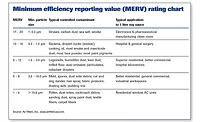The proof is in the paperwork
Documentation is essential for food processors to properly maintain food safety, quality, sanitation and food defense programs.
Without proper paperwork, food, beverage or ingredient processors cannot demonstrate they are protecting consumers, following procedures, adhering to government regulations or complying with standards such as ISO 22000. And the proof is in the paperwork.
A few years ago, I was conducting an audit in a meat facility. An integral part of this audit was the company’s documentation of risk assessments of not just its food safety programs, but all aspects of its operation.
The quality manager could not find his food safety assessment, yet kept telling me, “It is mandated, so we have it.” My answer was, “Show me.” When I returned to my hotel that evening, the client asked me to call him. When I called him back, he wanted to know what I did to get the quality manager so angry. He also asked me if the risk assessment was documented. My answer was no. The next morning, the quality manager apologized, but still could not show me the assessment, even though he insisted it had been done and was documented.
Perhaps one of the best reasons to maintain proper documentation is protection from potential liability issues. Here’s an example of the importance of documentation from a work-related injury. A member of the cleanup crew was badly injured by getting a caustic cleaning solution in his eyes while failing to wear proper eye protection. The accident occurred immediately after a meeting that addressed safe chemical handling. The injured worker’s colleagues testified he had attended the meeting, but he had not signed the attendance sheet. Therefore, there was no evidence he had been trained on safe chemical handling. The courts ruled the company to be negligent in that it had failed to train the person.
Management needs to make a serious commitment to developing and implementing a program that ensures procedures are documented, records are properly maintained, and methods are in place to verify these activities are being carried out as described. In addition, management must clearly define how to develop and maintain procedures and work instruction. Procedures should have a title, scope of purpose, instructions for how to do the task, expectations, a designation of who is responsible for managing the area or doing the work, guidelines for how the protocol should be documented and instructions for what form or forms should be used for monitoring. They should also include copies of forms in the procedure or work instruction. For example, any procedure that requires the use of personal protective equipment should reference what is necessary.
Procedures also must include the proper corrective actions if a problem occurs. For instance, if a critical control point is involved, meaning product safety is compromised, the protocol should describe not only how the operation is to be corrected, but also define what must be done with any affected food. Photographs can be included to make the protocols easier to understand. This is especially useful when creating procedures for equipment startup or shutdown.
One good way to build a documentation program is to assign someone to be the document control officer. This person is responsible for ensuring all procedures follow the correct format, have been reviewed for accuracy and signed off by the appropriate managers, and workers are using the correct procedures and recordkeeping forms. The document control officer is also responsible for maintaining records of revisions to procedures and forms.
Documentation is essential for a food processor to properly maintain food safety, quality, sanitation and food defense programs. Without good written procedures, there is no way work will be done properly, people can be adequately trained, or a processor can prove its role in assuring the safety of its people and products, as well as compliance with regulatory requirements.
Looking for a reprint of this article?
From high-res PDFs to custom plaques, order your copy today!






